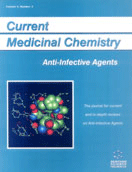Abstract
Highly active antiretroviral therapy (HAART) has dramatically decreased the morbidity and mortality related with HIV-1 infection. However, at the same time, the impossibility of eradicating the infection has made lifelong therapy with antiretrovirals necessary. This has caused the emergence of multiple side effects, including previously unseen and unexpected adverse drug reactions. In addition, the combination of different classes of drugs sometimes sharing common toxic mechanisms has made additive toxicity an increasing event. The purpose of the present work is to review the molecular mechanisms of action of the different antiretrovirals now used in clinical practice, and through these to gain insight into the potential mechanisms of antiretroviral drugsassociated toxicity. Two basic mechanisms of toxicity have been described associated with antiretroviral drugs; i.e. mitochondrial toxicity associated with the use of nucleoside reverse transcriptase inhibitors (NRTIs), and the metabolic toxicities associated with HIV-1 protease inhibitors. Both types of mechanisms eventually cause multiple clinical manifestations, and among them, the most important are the fat redistribution syndromes associated with HIV-1 infection and HAART. On the other hand, the growing knowledge about the pathogenic mechanisms of antiretroviral drugs-associated toxicities has promoted advances in the therapeutic approach, and overall, the design of new and promising antiretroviral drugs that may avoid some of the prior deleterious consequences of antiretroviral drug administration. In the context of long-term antiretroviral treatment for longterm surviving HIV-1 infected patients, this may be the best hope for the still growing number of infected patients worldwide.
Keywords: drugs-associated, long-term toxicity, highly active antiretroviral therapy, antiretrovirals, hiv-1 infection
 5
5

